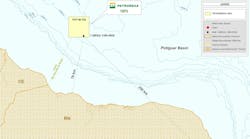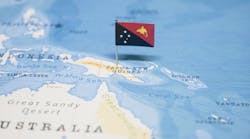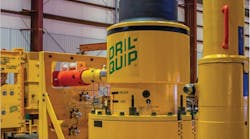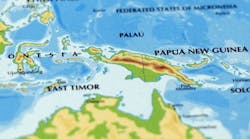Greg Kusinski
DeepStar
Offshore operators face the continuing challenge of meeting the global population's growing demand for oil and gas while conducting field operations safely, efficiently, and cost-effectively. Solutions to these dual challenges are best realized through collaborative technology developments that minimize risk and optimize results. This has been the core mission of the DeepStar joint industry development project for more than 20 years.
Since its inception in 1991, DeepStar has served as an incubator for collaborative development of technologies that enhance deepwater exploration, drilling, and production. DeepStar's consensus-driven approach to technical collaboration, guided by its close involvement and consultation of its 70-plus member organizations, has delivered advances across the deepwater E&P spectrum, from reservoir appraisal, ultra-deepwater drilling and completions, flow assurance, subsea processing solutions to floating structures and life extension. As the industry moves farther from shore into more challenging reservoirs and deeper waters, DeepStar is positioned to keep advancing new technical solutions in a collaborative environment.
The following is a review of some of the 20 key research initiatives under way in DeepStar's Phase XII development, which began in January 2014 and runs until the end of 2016.
Studying the subsurface
Accurately placing a well to its target depth is a common technical challenge during most drilling operations. Withindeepwater projects, these challenges are compounded by the technical limitations of seismic sensing technology and its ability to provide a sharp view of the reservoir, often covered by thousands of feet of water and miles of rock.
DeepStar's Geoscience Committee is running a project that aims to overcome some of these challenges, by focusing on more efficient deepwater 3D vertical seismic profile (VSP) acquisitions. In particular, the research project is investigating new designs and delivery of a large hydrophone array to enable seabed-to-total depth instrumentation of deepwater wells with seismic sensors.
Other research projects are focused on the reservoir itself. The Reservoir Engineering Committee is conducting an appraisal project focused on data mining that aims to determine the key factors that drive field rate and reserves forecasts prior to sanctioning. The committee is also investigating catalytic in situ carbon dioxide (CO2) generation. In particular, this research aims to establish the technical feasibility of ammonium carbamate flooding in conjunction with an interfacially active nanocatalyst as an alternative to conventional CO2 flooding.
A sizable research project is investigating ways to improve sweep efficiency in high-temperature, low-permeability reservoirs using new gels and polymers. Project objectives include identifying suitable chemical formulations for polymers and gels that will remain stable at 100-120°C (212-248°F) for many years, testing flow properties of promising polymers in low-permeability (10-mD and below) rock, and developing reservoir engineering concepts that allow for optimal application of gel treatments in the field.
Upgrading subsea systems
Some research projects are focused on bolsteringsubsea structures and facilities to stand up to the rigors of deepwater environments for extended periods. The Subsea Facilities Committee is overseeing an initiative around pipeline integrity management using a facilitated workshop setting. Member companies first discuss common issues related to integrity management and monitoring of pipelines, which will then be covered in greater detail in a series of workshops designed to educate service providers and technology developers and motivate them to develop workable solutions. The committee has approximately $300,000 in funds available to help develop the best integrity management alternatives for future field study.
The committee is also overseeing research projects aimed at identifying and closing the gaps in subsea systems designed for operation in ambient pressures of 20,000 psi or greater.
Integrity of subsea equipment is also a major focus of research in Phase XII. The Subsea Facilities Committee is running a research initiative to identify conformable arrays for subsea pipeline inspection and internal/external corrosion imaging through pipe insulation, as an alternative to in-line inspection (ILI) tools. This project is the continuation of a multi-year research and gap analysis. The objective of the project is a performance demonstration and deepwater marinization, with a focus on determining the performance limits of the technology.
The Systems Engineering Committee is guiding projects that are geared toward improving subsea fluid processing and water management systems. A project qualifying subsea systems for enhanced oil recovery (EOR) water injection—a continuation of research started in a previous phase—aims to develop a detailed evaluation plan for seawater treatment membranes and filtering media, which were the two most promising process schemes identified in the earlier phase of study.
Another project is investigating methods of produced water management and disposal, with a particular emphasis on why offshore produced water reinjection (PWRI) is not implemented by the industry. The project will identify current technology gaps for offshore produced water treatment, and develop guidelines for produced water treatment to facilitate offshore PWRI.
The industry's wider acceptance of subsea fluids processing and EOR strategies will require robust and reliable power systems at the seafloor. To that end, the Systems Engineering Committee is also spearheading an electrical power strategies and roadmap project, which will identify technology gaps for infield power sources and for subsea DC power transmission systems. The ultimate objective is to identify capabilities, technical gaps, and suppliers working to address these gaps.
Displaying 1/2 Page 1,2Next>
View Article as Single page




